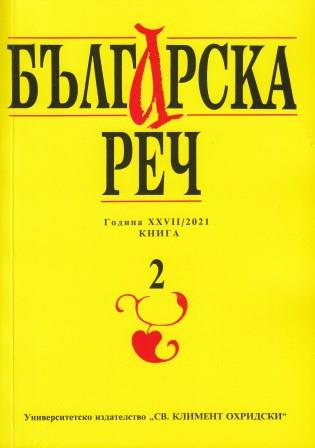Приемственост и промяна в българския книжовен език: Каква е разликата между градовце и градчета?
Continuity and Change in Standard Bulgarian: How does gradovtse differ from gradcheta?
Author(s): Olga MladenovaSubject(s): Language studies, Language and Literature Studies, Studies of Literature, Bulgarian Literature, Philology
Published by: Софийски университет »Св. Климент Охридски«
Keywords: diminutives; quantification; diachrony; damaskini; Bulgarian
Summary/Abstract: The paper is a corpus-based case study in linguistic archaeology aiming to reconstruct the semantics and conditions under which a category of Bulgarian plural diminutives formed from monosyllabic masculine count nouns has been used since the seventeenth century. The author argues that the plural diminutives were initially used in a restricted geographic area to express the speaker’s opinion that the referents, always more than one, fall in numeric terms below a certain norm. As part of the standard language, the forms gradually transformed into regular diminutives, which eventually led to their elimination from the standard language as superfluous. Such forms occasionally resurface in twenty first-century colloquial speech with their initial meaning and their use is currently restricted to the numeric assessment of the repetition over time of events and experiences.
Journal: Българска реч. Списание за езикознание и езикова култура
- Issue Year: 2021
- Issue No: 2
- Page Range: 9-32
- Page Count: 24
- Language: Bulgarian
- Content File-PDF

